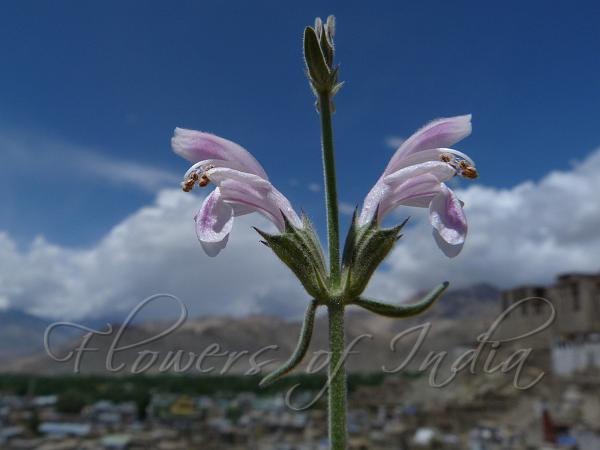|
| Tibetan Woundwort |
|

|

| File size | 356920 |
| Original date | 6/26/12 11:43 AM |
| Resolution | 2560 x 1920 |
| Flash | Flash did not fire, auto |
| Focal length | 4.5mm |
| Exposure time | 1/1000s |
| Aperture | 5.6 |
| Focus Distance | |
| Metering Mode | Multi-segment |
| Camera make | Panasonic |
| Camera model | DMC-FZ40 |
| Sensor type | OneChipColorArea |
|
|
|
|
Photo: |
Botanical name: Eriophyton tibeticum Family: Lamiaceae (Mint family)
Synonyms: Stachys tibetica, Menitskia tibetica
Synonyms: Stachys tibetica, Menitskia tibetica
Tibetan Woundwort is a perennial, woody,
clump-forming, much branched plant. Stems are slender, quadrangular,
erect, 20-50 cm, with a fine short eglandular indumentum. Leaves are
oblong to ovate-lanceolate, 1-2.5 cm long, 0.5-1 cm wide, entire to
clearly lobed, cuneate, acute, green, on both surfaces hairy with
short hairs, with numerous sessile oil globules on the underside.
Verticillasters are 2-, rarely up to 6-flowered, clearly distant.
Bracts subulate, spiny, 3-5 mm. Sepal cup is tubular-obtriangular,
18-10 mm, ± densely covered with fine short hairs and sessile oil
globules, not bilabiate; teeth triangular, c. 4 mm, equal, spinulose,
erect-spreading; tube glabrous at throat. Flowers are pink, 1.5-2 cm,
shortly pilose; tube narrow straight, c. 10 mm, annulate; upper lip ±
straight, entire. Stamens 4, didynamous, usually curved and projecting
below corolla upper lip; thecae slightly hairy. Nutlets c. 2.5 x 1.5
mm, trigonous, apically truncate. Tibetan Woundwort is found in
Pakistan, Kashmir, NW India, W. Tibet, at altitudes up to 4500 m.
Flowering: June-August.
| Identification credit: Amit Chauhan | Photographed in Leh, Ladakh. |
• Is this flower misidentified? If yes,